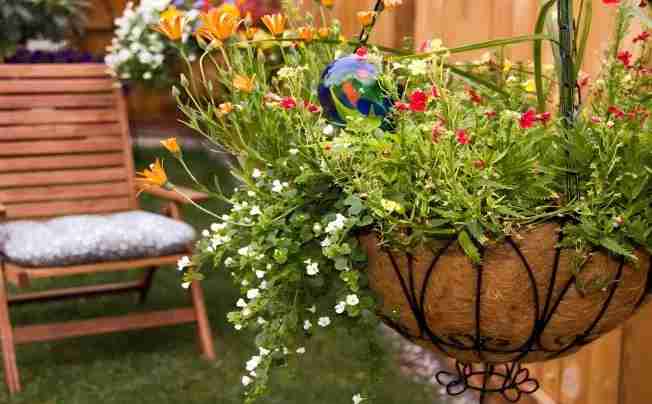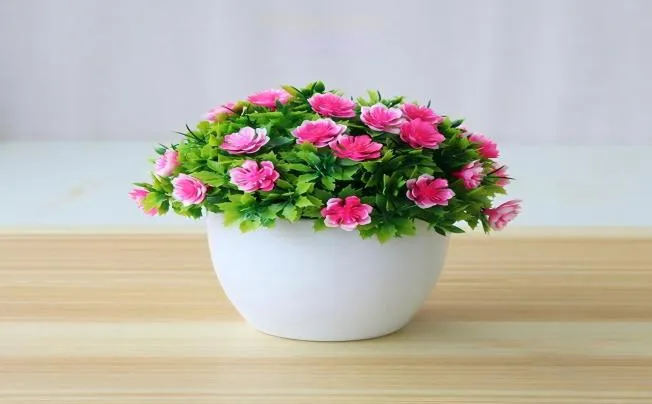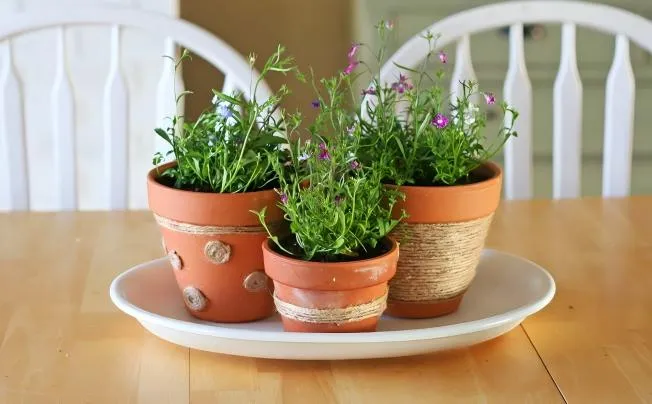Will Metal Planters Get Too Hot?
Metal flower pots look so beautiful and durable, but will they overheat in hot weather and affect the growth of plants?
Heating principle of metal flower pots
Let's start by understanding the heating principle of metal flower pots. According to the physics concept of heat conduction, metal is an effective heat conductor. A metal flower pot's temperature rises quickly when sunlight strikes it because the atoms on its surface absorb the energy of the sun's rays, intensifying their vibration. The energy will be transferred when these atoms clash with nearby ones. This raises the temperature of the entire metal flower container by conducting heat along the metal substance from the outside to the interior.

In what situations are metal flower pots prone to overheating?
Climate-related factors
The issue of metal flower pots overheating is most noticeable in regions with hotter temperatures. For instance, the southern part of my nation experiences long summers with high temperatures that frequently reach above 35°C, intense sunlight, and severe UV radiation. Metal flower pots act as a "little sun" in such climates, absorbing a lot of solar heat.
In terms of seasonal variations, metal flower pots are most likely to overheat during the summer. The sun shines straight on the earth during the summer, when the solar altitude angle is great. The temperature can rise quickly in metal flower pots because they can absorb all of the solar radiation's energy. In contrast, the spring and autumn months have milder temperatures, less intense sunlight, little temperature increase in metal flower pots and typically no overheating. Wintertime brings low temperatures and limited sun radiation energy. In addition to not overheating, metal flower pots might require warming techniques due to the low temperature in order to shield plants from frost damage.
Positioning
Unprotected and exposed to the sun's blazing rays, metal flower pots put in open areas and direct sunlight are like being on a battlefield with high temperatures.
It is very different when metal flower pots are placed in sheltered or semi-shaded areas. It can receive scattered light, for instance, if it is positioned beneath a large tree or on a balcony corner with parasol facilities. In this setting, the metal flower container slows down its rate of heating and receives less energy from the sun.
Effects of high temperatures on plants
Root system damage
The soil near the flower pot will warm up when the outside temperature rises, particularly if the metal flower pot heats up rapidly because of its high thermal conductivity. The rate at which plant roots lose water will be accelerated by excessive soil warmth, making it more difficult for the roots to maintain water balance. The activity of certain enzymes in the root system, which are essential to the process by which plants absorb water and nutrients, will also be decreased by high temperatures. The overall absorption system's ability to function will be hampered once the activity is decreased.
effect on the plant as a whole
To minimise water loss, the plant will immediately close its stomata when the temperature rises too high. The "respiratory organs" of plants are called stomata. Their closure causes a number of issues even if it can help retain water to some degree. Carbon dioxide and light energy are needed for photosynthesis, a vital process for plant growth that creates organic matter. The plant cannot properly absorb carbon dioxide when the stomata are closed, which will prevent photosynthesis. Additionally, respiration will be impacted, and the plant will be unable to perform gas exchange and energy metabolism as usual, which will cause the plant's growth rate to drastically slow down.
Furthermore, plants' resilience will be diminished in high-temperature conditions, leaving them more susceptible to pests and diseases.

How to prevent metal flower pots from overheating?
1. Physical isolation method
The physical isolation method involves placing an insulation pad at the bottom of the flower pot. These pads are made of a variety of materials, including cotton and bamboo. Cotton pads are soft and highly absorbent, which can effectively buffer heat transfer and prevent heat from being conducted from the ground to the flower pot. Bamboo pads, on the other hand, have good insulation qualities and can effectively resist heat. Additionally, their varied shapes can add a natural beauty to the flower pot.
Cover the flower pot's outside with insulating materials. Linen has some insulating and air-permeability qualities. By wrapping it outside the flower pot, you can lessen heat absorption while also giving the container a more rustic look. The foam material has a light texture and a substantial insulating effect. In addition to efficiently lowering the flower pot's total weight, it can also act as a buffer to prevent impact damage.
2. Appropriate watering
Water will slowly seep into the earth as we water the flower pot. The water starts to evaporate as the temperature rises, which lowers the soil's and the flower pot's actual temperature. The pace at which water evaporates is enhanced during the hot summer months. To keep the soil moist, make sure the plants have enough water, and keep the flower pot at the right temperature, we can increase the frequency of watering in the right amounts.
Because of the generally warm temperatures in the spring and autumn, plants can be watered once every two to three days. The best times to choose at this time are in the morning or evening because the temperature is lower and water evaporation is slower, which allows the plants to absorb water completely. It is more acceptable to water once in the morning and once in the evening each day during the summer, particularly when the temperature rises beyond 30°C.
However, be cautious not to water during midday since the temperature is too high and the soil temperature is also high at that time. The temperature of the soil will drop precipitously after abrupt watering, stimulating the roots of the plants. Wintertime brings lower temperatures, slower plant growth, and less water need. Watering should be done no more frequently than once or twice a week, and the water should be kept at room temperature to avoid causing damage to the roots of the plants.
3. Modify the positioning
The sun often rises from the east in the morning. To allow the plants to completely appreciate the gentle morning light, we can position the flower pots on the east side of the balcony or courtyard. The metal flower pots currently absorb comparatively less heat. The sun gets stronger throughout time, and the angle of direct sunlight varies at noon. To minimise heat absorption and prevent direct sunlight from damaging the flower pots, relocate them to a semi-shaded area at this time.
The sun slowly sets in the west in the afternoon. To keep the flower pots from burning from prolonged sun exposure, we can relocate them slightly to the west so they continue to receive the right amount of dispersed light to support the plants' regular photosynthesis. To put it briefly, we can let the metal flower pots enjoy the sun without worrying about scorching and provide a comfortable growing environment for the plants by judiciously shifting the flower pots' placement direction at different times of the day.

Selected Blogs
-
What customization services are available for metalworking customization?
2024-12-12
-
What Is The Difference Between A Plant Container And A Raised Bed?
2024-04-23
-
Garden Screening & Fence Panels
2024-04-23
-
Gardening pot selection tips
2024-04-17
-
The function and collocation of horticultural fire pot
2024-04-17


